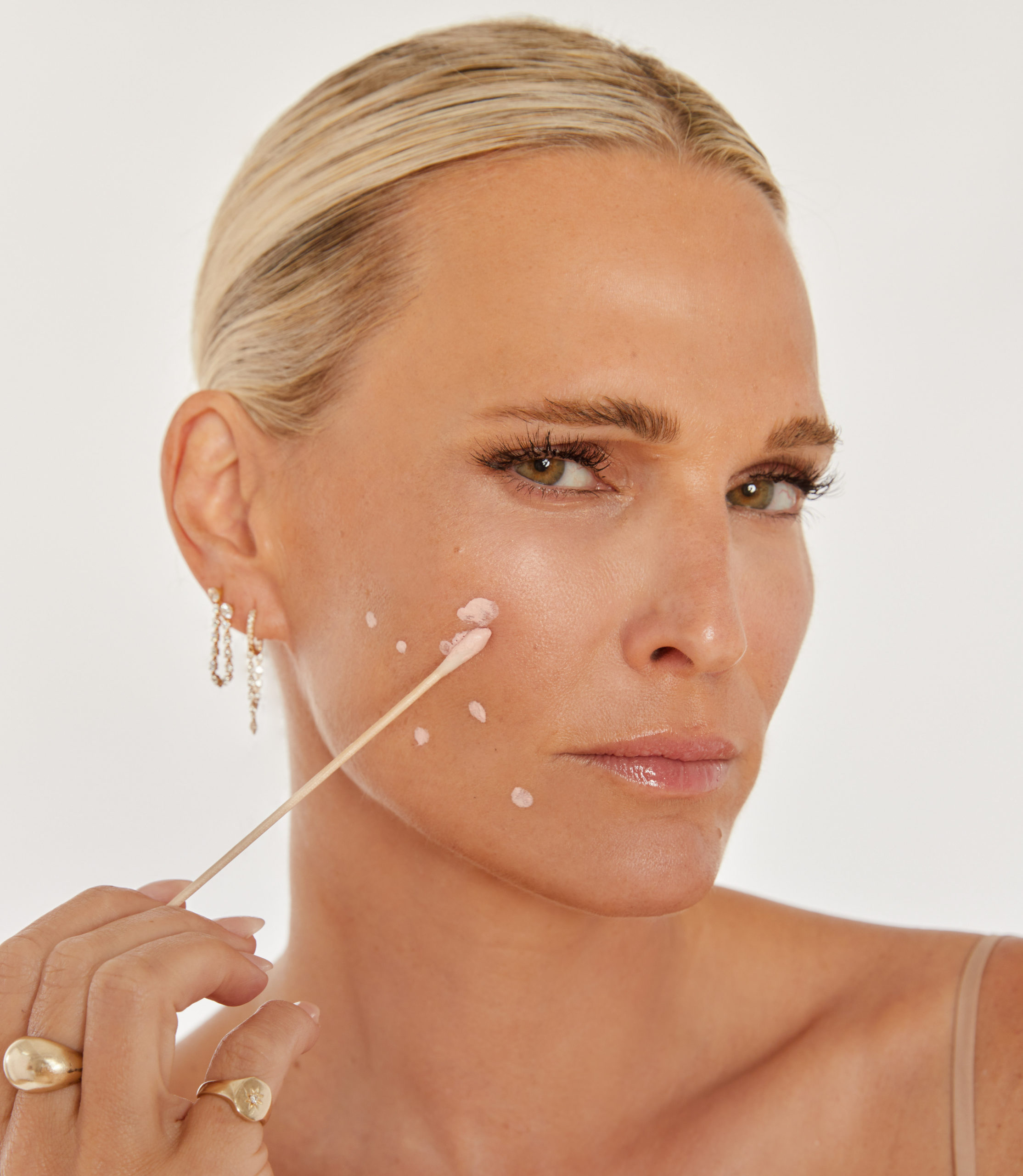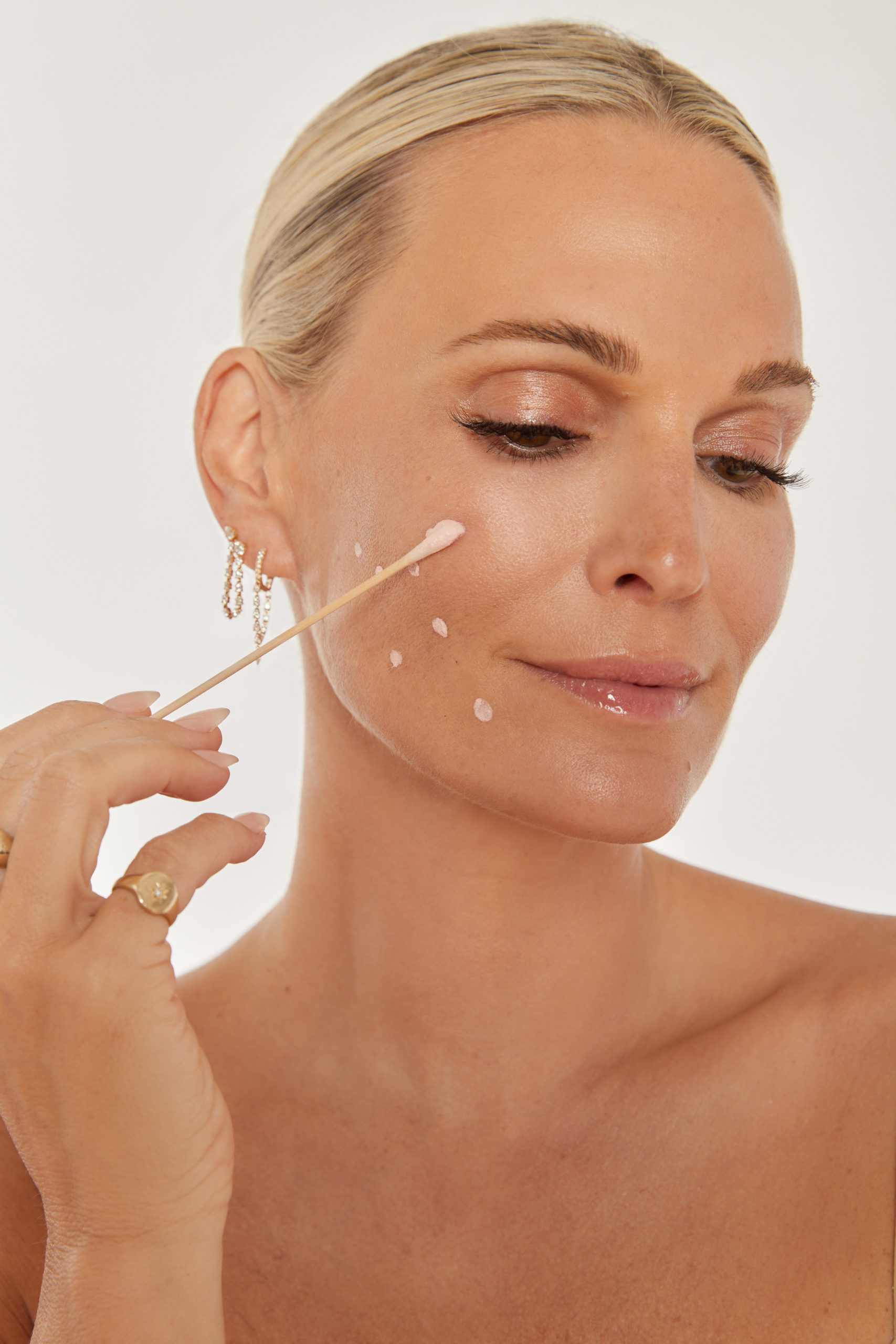Beauty...

By Elise Tabin
Pimples suck, but you don’t have to live with them. While it may seem like ‘overnight’ blemishes pop up out of nowhere, they’re actually a long time in the making, taking anywhere from seven days to a few weeks to debut. Usually, acne breakouts signal an internal imbalance from hormones, elevated sebum production, stress, clogged pores, or diet. They can also be a way of your skin telling you that it’s not compatible with a product. But just because these bumps quickly erupt doesn’t mean you can’t take a lightning-speed approach to get rid of them.
Board-certified dermatologist Dr. Orit Markowitz, MD, and the founder of OptiSkin, explains that today, the biggest breakout trigger is maskne from increased sweating under a mask. “If you already have acne, these components will cause it to flare,” she adds. “Plus, women are susceptible to hormonal acne, which can lead you to break out around the time of your menstrual cycle.”
Spot treatments work best on pus-filled pimples, also known as pustules. Safely loading up the skin—you don’t want to overdo it, which can lead to unnecessary redness, irritation, and peeling—with a spot treatment will help decrease oil lodged in the pore and reduce inflammation to shrink it. Choose something with a proven active ingredient like salicylic acid, which unclogs the sticky dead skin cells that leads to zits, benzoyl peroxide to kill the bacteria and dry up oil in the pore, or sulfur, which works similarly to benzoyl peroxide but also calms the skin. An exfoliating mask with lactic acid is a good choice since it will help pull out the redness and flatten the pimple, too. You can also try tea tree oil as a quick fix for bad breakouts—it can be irritating and drying, so don’t apply it with a heavy hand.
For nasty blackheads and whiteheads, Dr. Markowitz suggests an over-the-counter product like Differin Gel, which contains a retinoid known as adapalene.

@cassidyblisscooper
Hydrocolloid patches work wonders at reducing inflammatory pimples. Pimple patches pack a one-two punch and are available both as transparent stickers, which you can sport during the day, or bright, fun ones.
“These small adhesives stop people from picking, which is critical to help heal acne,” says Dr. Markowitz.
She discloses that one of the biggest issues with picking (especially inflammatory pimples) is that the breakout itself becomes much worse, takes longer to heal, and can potentially scar. Secondly, patches “not only help to calm down some of the inflammation because they give a barrier protection to the skin,” adds Dr. Markowitz.
Believe it or not, certain foods can be applied topically to the skin to even it out. “Try dabbing a bit of yogurt onto a pimple,” advises Joanna Vargas, celebrity facialist, founder of Joanna Vargas Salons and Skin Care, and the author of Glow From Within.
“Yogurt contains probiotics which will calm the skin and heal it fast,” she explains.
Another food-related hack includes applying apple cider vinegar to blemishes and problem areas. “It’s an effective antibacterial and antifungal liquid that is capable of keeping breakouts at bay,” Vargas says. “Or, dilute water with 1/3 parts apple cider vinegar and use it as an all-over toner after washing your face.”
Icing, which is just what it sounds like, is another option. Hold an ice cube directly on the pimple for as long as humanly possible, and repeat it a few times during the day. The coldness of the ice works to reduce redness and inflammation.
When it comes to pulling out the big guns at home, DIY tools are the way to go. Plus, they don’t require having to step foot outside of your house, so you can treat the zit that’s taking up space on your face in the privacy of your own home.
Different devices employ different technologies. The most popular ones use LED blue light and microcurrent and nanocurrent wavelengths to purify the skin by destroying bacteria, red light to reduce redness and inflammation, and high-frequency energy, which emits currents that suffocate acne-contributing bacteria.
Regardless of the technology, they all work towards the same end goal. Just remember that while effective, at-home versions of your favorite in-office treatments are not as strong since a professional is not administering them, so always proceed with caution.
When time is of the essence, and you have to make that pimple go away super fast, book an emergency appointment with a professional. At Vargas’s New York and Los Angeles spas, she offers treatments that employ the RevitaLight LED Light Bed, which painlessly uses LED red light to diminish breakouts. “I have always been a huge fan of using red light as a way to calm inflammation and heal and transform the skin,” she says.
You can also visit your dermatologist for a cortisone shot, which works for larger, cyst-like pimples that feel like they have a heartbeat. “Sometimes an inflammatory pimple has the potential to leave a scar when it heals,” says Dr. Markowitz. “The thought process is that the quicker you manage it, the less likely you will have a scar. But either way, even with an emergency treatment, some scarring can result,” she explains. “Often, cortisone, when injected properly, at the right dose, and directly into the pimple can help alleviate the discomfort and shrink the cystic component so that it heals quicker,” says Dr. Markowitz, adding that the zit should resolve in 24 to 48 hours.